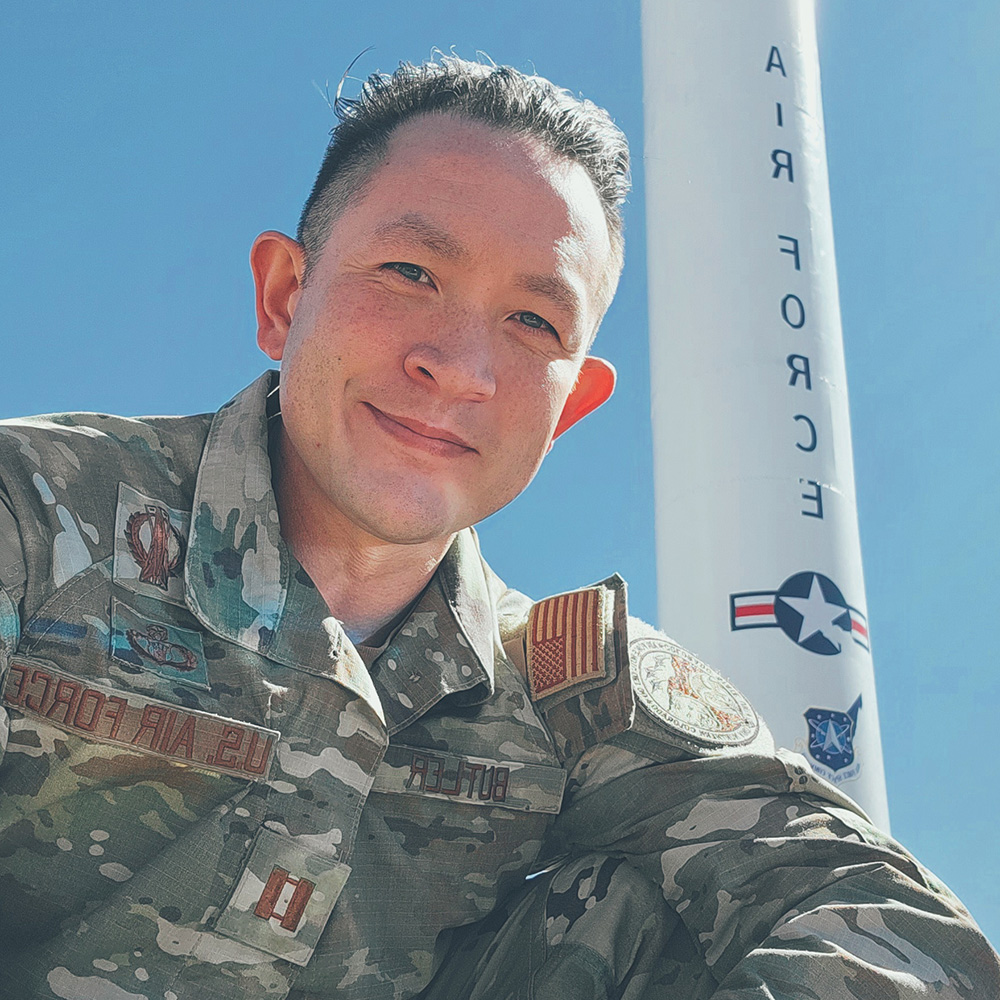
U.S. Air Force Capt. Rob Butler was hanging out with faculty members in the Military Sciences Building when they were startled by a group of students.
“We were just talking shop in the office, and they came rushing in asking if any of us had medical training,” said Butler, an assistant professor of aerospace studies at Colorado State University.
Outside of their Air Force ROTC office, Butler and his colleagues found a dozen students hovering over an unresponsive person on the ground. The faculty members quickly checked the vitals, finding a breath and a pulse. But after a minute of monitoring, the breathing stopped.
“I was not getting any kind of pulse,” Butler said, “and so we began chest compressions. We had one of the instructors get the students out of the way and had a couple people call 911.”
As they were about to start the automated external defibrillator device — known more commonly as an AED — they heard a faint cough. An ambulance arrived on scene, and the person was taken to the hospital and treated.
For Butler and others at CSU, the experience underscored the importance of CPR and AED device training at a university with more than 35,000 people on campus. CSU offers a variety of CPR, AED and first aid classes for students, faculty and staff through the Office of Risk Management and Insurance.
Frank Gonzales, who manages the AED/CPR program at CSU, said that when a person is not breathing, it’s only a matter of minutes before the chances of survival dwindle — explaining that with every minute that passes, the survival rate drops by about 10%.
“You can’t pause the stopwatch — you can’t stop it,” Gonzales said. “The only way that you can extend it or slow it down a little is by using CPR and getting an AED.”
CPR training information and registration
The Office of Risk Management and Insurance offers AED orientation and adult and pediatric CPR, AED and first aid classes. Each of these classes is offered on a regular basis and is open to all CSU faculty, staff and students. learn more
For Gonzales, the importance of CPR/AED training hits close to home. In February, he lost a family member to cardiac arrest. Outside of cell phone range, the person performing CPR on the family member could not contact a paramedic.
At CSU, Gonzales explained that the university provides important, life-saving resources. In addition to the training classes open to all students, faculty and staff, CSU has more than 250 AED devices across campus. Gonzales said most AED devices can be found near gathering spaces such as building entries, elevators and bathrooms, adding that CSU offers an interactive map showing all AED locations on campus.
“Cardiac arrest and heart attacks are going to happen unfortunately. CPR is one of those things where you don’t need it, until you need it. That person on the ground is somebody’s mom, dad, daughter, son, brother, sister — and it’s going to be heartbreaking to lose someone in that manner.”
Frank Gonzales, manager of the AED/CPR program at CSU
As for CPR/AED training, Gonzales explained that the Office of Risk Management and Insurance offers a variety of in-person, virtual and blended training options, with some taking only 30 minutes to complete.
“Cardiac arrest and heart attacks are going to happen unfortunately,” Gonzales said. “CPR is one of those things where you don’t need it, until you need it. That person on the ground is somebody’s mom, dad, daughter, son, brother, sister — and it’s going to be heartbreaking to lose someone in that manner.”
For Butler, he said it wasn’t the first time he has had to use CPR to help someone, adding: “You never know when it’s going to happen. I look at it as: If something were to happen me, I hope there’s somebody around who can take care of myself or my family member.”
Col. Gregg Johnson, commander of CSU’s Air Force ROTC, commended Butler’s actions in helping the person.
“We are extremely proud of Rob and his quick, decisive actions to revive the person,” he said. “As military members, we are trained in tactical combat care, and he applied these skills to save a life in an everyday environment – just awesome.”